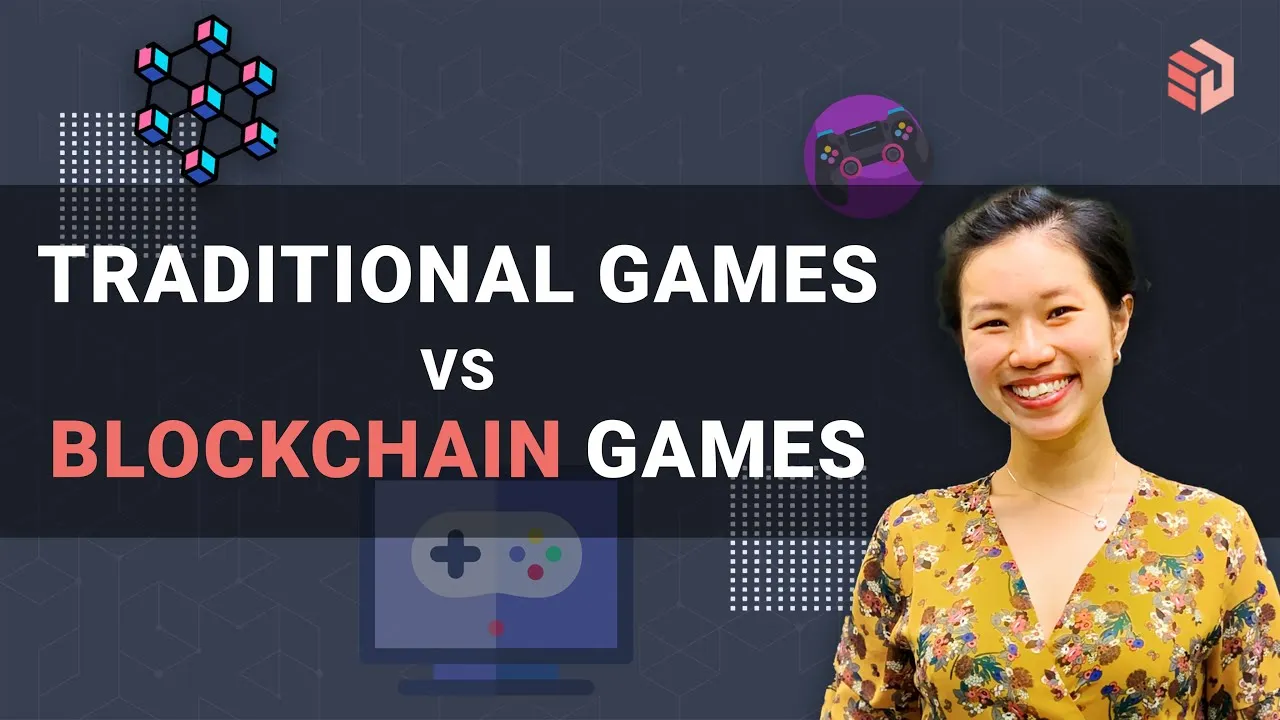Economics Design
Welcome, subscribers! Thank you for subscribing. What will be shared today and the days ahead are alpha from our Economics Design's researchers. Please keep these mails secret and do not share them with any one because these alpha are confidential. Enjoy your reading.This is not financial advice.
Catch the episode on YouTube

Introduction
In this article, we take a look at the 3 major differences between traditional games and blockchain games. Firstly, we look at the tradable nature of assets and tokens followed by the complexity of games, and blockchain games as a proxy of real world concepts.
Difference #1: Tradable Assets And Tokens
The major difference is that blockchain games allow people to use the tokens or assets that they have created or earned to be exchanged for fiat. With traditional games, you cannot sell your assets, but in blockchain games this is possible. The tokens you win, earn, or collect can be exchanged for fiat, or you can use the tokens to create assets like different kinds of lands or different kinds of digital properties, which can then be sold for cash or for a currency that can be exchanged for cash.
Implication
The implication is that with every decision people make there is this thing called opportunity cost. In this case, if someone were to earn USD 10 worth of tokens through games then they can either take this $10 and change it to fiat and use it in Indonesia or Malaysia or the Philippines for example, or take this $10 and continue playing in the game. This is where the trick lies because if the value given to the $10 worth of token holders is much higher if they liquidate and change to fiat because it is higher than the daily wages of that country, then this individual is more likely to play the game. They can cash it out anywhere when it suits them and then use that in the physical economy, something which is not possible with traditional games. This by default pulls people more towards blockchain games.
How Does That Affect Gameplay And The Economy Of The Game?
Traditional games are more of a closed-loop where things are being created and added back into your economy. The key thing in games is complex exciting gameplay to get people into your game and to get them excited to continuously keep playing. In blockchain games, you not only have to fix the gameplay but also have to fix the economy because there is this new economic activity which is people transferring their tokens or their assets to fiat. It is not just about the internal monetary policy that you have in traditional games. Now you need to think of cross-border payments and treasury management, and allow your economy to be open to the physical or the real world. This is the biggest difference.
Difference #2: Complexity of the Game
With traditional games, you have a lot of different game modes like free-to-play, pay-to-win, flash games, etc. Simple games or complex games with different types of game styles all work because you have different kinds of business models. In blockchain games, we need to think about the international balance of payments and this adds complexity which limits the kind of gameplay and game types. In blockchain games, you need to have very complex games. Flash games or simple games or games where you try to get a lot of people in and then sell ads do not work. For more details check out the big play-to-earn report we’ve written with a bunch of very bright people.
Difference #3: Proxy Of The Real World
In traditional games, it’s like a little proxy to figure out how to manage monetary policy and how to manage your ecosystem. These game designers usually take concepts from central banks and the physical world that we have today. Blockchain games change everything. Firstly blockchain games are complex models and complexity and UGC in digital blockchain games is basically like someone starting up their own business in the physical world so you have a lot of similarities. You can look at blockchain games as a smaller subset of an economy where we have complexity, UGC, different types of asset classes, and different types of classes of wealth coming into the game. People voluntarily come in to interact, play and then they cash out or continuously play to get more tokens to advance in the game so it’s like a proxy of the physical world that we are in.
This is fascinating because today with all these interactions on the blockchain we can start capturing the data, measuring the interactions, and understanding the behaviors of people when we have different kinds of incentives or economic policies in place.
Value Creation By Gamers
Gamers are one of the most valuable assets that we have in the world to be able to experiment with and try these different games so that we can start researching and understanding how people behave and then turn this into proper economic policies. We can combine theoretical work, analytical work, and economic theory and then implement it in this little ecosystem to test it in natural experiments and reward people with tokens which they can cash out as money.
Conclusion:
There are 3 major differences between traditional and blockchain games. Firstly the assets and the currency is tradable in the blockchain games. Secondly, the blockchain games need to be complex in order to accommodate the economics systems and simple games just do not work here. Lastly, the blockchain games usually take the concepts from the physical world and are, therefore, like a proxy of the real world.
